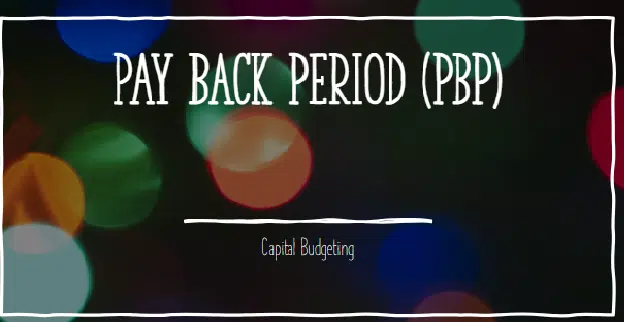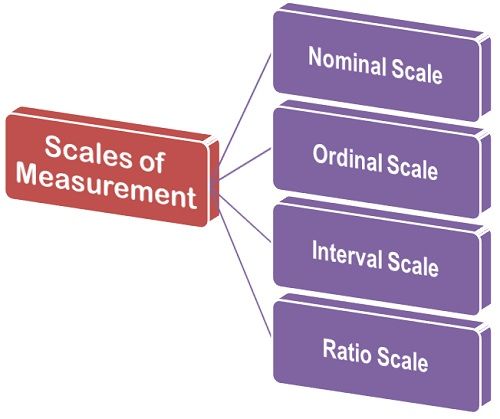What is Pay Back Period (PBP)?
Pay Back Period (PBP) is an investment appraisal technique known as the capital budgeting technique. However, PBP provides the period taken by a project to recover the initial investment in the project using cumulative cash flows. Furthermore, Managers use PBP to know the estimated time taken by a project to refund the project’s investment. As a general rule of thumb, projects with shorter PBP are acceptable for a firm.
Importance of PBP
Pay Back Period (PBP) does not provide information about profitability or returns generated by a project over its life. It provides information about the time taken by a project to recover the initial investment. Projects with shorter payback periods are attractive for firms because the initial investment is recovered quickly. It allows using cash flows to finance another project. Projects with long payback periods are not attractive to managers. Net Present Value (NPV) is technique managers use to determine the value a project contributes to the company.
Advantages of PBP
- PBP is easy to use and interpret. It does not involve complex calculations which consume time and resources.
- PBP provides meaningful information to managers, which helps manage liquidity and cash flows.
- PBP does not need a discount rate or Weighted Average Cost of Capital (WACC) to reduce cash flows to their Present Value (PV) because it does not use discounted cashflows.
- PBP allows managers to compare projects based on the recovery period, which cannot be done using NPV and Internal Rate of Return (IRR).
Disadvantages of PBP
- It is a non-discounted cash flows appraisal technique which does not reduce future cash flows to their Present Value (PV) using a discount rate. PBP and Accounting Rate of Return (ARR) are two widely used techniques which do not discount cash flows to their Present Value (PV). This technique neglects the time value of money. A modified form of PBP, known as Discounted Pay Back Period (DPBP), is used by managers to estimate the recovery period using discounted cash flows.
- PBP neglects cash flows from a project beyond the recovery period. It only accounts for cash flows up to the recovery period. Hence, A project may provide negative cash flows after the recovery period, which PBP does not consider.
- PBP is only concerned with the recovery period. Furthermore, It provides no information about the value provided by a project or the break-even of a project.
Acceptance Criteria
Managers usually set a cut-off period to accept or reject a project using PBP. Additionally, the payback period must be equal to or lesser than the cut-off period to accept the project. A project cannot be accepted if the payback period is longer than the cut-off period. When a firm is considering investing in multiple projects which are mutually exclusive, the project with the shortest payback period is attractive and acceptable.
| PBP is lesser than cut-off period | Reject the project |
| PBP is lesser than cut-off period | Accept the project |
PBP formula for Even Cash flows
It is quite easy to calculate PBP for projects with even cash flows. It is calculated by dividing initial investment by the annual cash flows provided by a project.

PBP formula for Uneven Cash flows
Cumulative cash flows are used to calculate the breakeven period for a project with uneven cash flows. However, for a project with uneven cash flows, the PBP period formula is modified as follows:

where,
- A= year preceding the year of full recovery
- B= Initial Investment
- B= Cumulative cash flows recovered before the year of recovery
- C= Cash flows in the year of recovery
Example
The Innovidea wants to invest in a project and is interested in knowing the period taken by the project to recover the initial investment. The project has an initial investment of $5000. Cash flows from the project are uneven and expected to be received in the following manner.
| Year | 1 | 2 | 3 | 4 | 5 |
| Cash flows $ | 1500 | 2000 | 3000 | 2500 | 4000 |
To calculate PBP, first, we need to calculate Cumulative Cash flows (CCF) and identify the year of full recovery.
| Year | Cash flows $ | Cumulative Cash flows $ |
| 1 | 1500 | 1500 |
| 2 | 2000 | 3500 |
| 3 | 3000 | 6500 |
| 4 | 2500 | 9000 |
| 5 | 4000 | 13000 |
The project’s initial investment is $5000, which will be recovered in the 3rd year. Therefore, it will be the year of full recovery. The year immediately preceding the year of recovery is A, cumulative cash flows recovered before the year of recovery is C, the initial investment is B, and cash flows in the year of recovery are D.

Using the PBP formula for uneven cash flows, the PBP of the project is 2.5 years.

Innovidea wants to accept the project only if the initial investment is recovered within three years. The project is acceptable because PBP is 2.5 years, which is less than the cut-off period.
PBP versus Break-Even
PBP is not the break-even point of a project. Both have different purposes and meanings. While PBP provides information about the recovery period, break-even is when a project is not making profits or suffering losses. The project’s Net Present Value (NPV) is zero at the break-even point. (NPV= 0; Break-even point).




